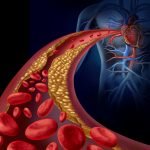NODE SMITH, ND
An immune signal promotes the production of energy-burning “beige fat,” according to a new study published in the open-access journal PLOS Biology by Zhonghan Yang of Sun Yat-Sen University, Guangzhou, China, and colleagues. The finding may lead to new ways to reduce obesity and treat metabolic disorders.
The beige color in beige fat comes from its high concentration of mitochondria, the cell’s powerhouses. Mitochondria burn high-energy molecules like fats and sugars with oxygen, releasing energy. Normally, that energy is stored as ATP, the energy currency that the cell uses for almost all its activities. But in beige fat, mitochondria accumulate a protein called “uncoupling protein-1” that limits ATP production, generating heat instead.
Babies are born with “brown fat,” a similar tissue concentrated in the shoulder region, which helps them stay warm, but brown fat is gradually lost with age. Not so beige fat, which is more widely distributed and which can be generated throughout life in response to both cold and neuronal or hormonal stimulation.
Recent work, including by the authors of the new study, has revealed that cytokines — immune system signaling molecules — play a role in regulation of beige fat. To explore that regulation further, the authors manipulated levels of the cytokine interleukin-25, and showed that an increase in the cytokine could mimic the effects of both cold and stimulation of a hormone receptor in increasing the production of beige fat in mice. They traced the signaling chain further, showing that IL-25 exerted its effects through two other cytokines, which in turn regulated immune cells called macrophages. Those cells acted on neurons that terminate in the beige fat tissue, promoting an increase in production of the neurotransmitter norepinephrine, which was already known to promote beige fat production. Thus, the authors’ work revealed the sequence of regulatory signals that begins with IL-25 and ends with release of norepinephrine and an increase in beige fat.
Finally, the authors showed that administering IL-25 to mice that were eating a high-fat diet prevented them from becoming obese and improved their ability to maintain their responsiveness to insulin, which is impaired in chronic obesity.
“Our results show that interleukin-25 plays a key role in production of beige fat,” Yang said, “and point toward increasing interleukin-25 signaling as a potential treatment for obesity.” 1. Lingyi Li, Lei Ma, Zewei Zhao, Shiya Luo, Baoyong Gong, Jin Li, Juan Feng, Hui Zhang, Weiwei Qi, Ti Zhou, Xia Yang, Guoquan Gao, Zhonghan Yang. IL-25–induced shifts in macrophage polarization promote development of beige fat and improve metabolic homeostasis in mice. PLOS Biology, 2021; 19 (8): e3001348 DOI: 10.1371/journal.pbio.3001348

Node Smith, ND is a naturopathic physician in Humboldt, Saskatchewan and associate editor and continuing education director for NDNR. His mission is serving relationships that support the process of transformation, and that ultimately lead to healthier people, businesses and communities. His primary therapeutic tools include counselling, homeopathy, diet and the use of cold water combined with exercise. Node considers health to be a reflection of the relationships a person or a business has with themselves, with God and with those around them. In order to cure disease and to heal, these relationships must be specifically considered. Node has worked intimately with many groups and organizations within the naturopathic profession, and helped found the non-profit, Association for Naturopathic Revitalization (ANR), which works to promote and facilitate experiential education in vitalism.





